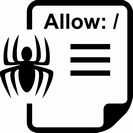what is a website builder?
- Posted by Livecity In category Website Builder
If you're thinking of creating a new website, you don't need to hire an expensive web designer or learn how to do any coding. All you need is a website builder.
Website creation made easy
The basic idea of a website builder is similar to using building blocks. You simply take the pieces you want on your website, drop them in place, and you're ready to go! The result is a great looking website without any big price tag.
A free website builder such as Livecity, allows you to create the perfect website without any obligation or big investment. You can make sure you will get the website you want without having to pay anything.
What makes a good website builder
The key to choosing the best website builder for your site is variety. A website builder should allow you to create a website that is right for you. This means having plenty of templates and designs available. After all, your website is a reflection of you. You don't want it to look like every other website filling up the internet!
Another big thing to consider is whether a website builder offers an easy drag and drop designer. This will allow you to do exactly what you want with your site. If you want your contact details on the left, just drag and drop that element there; if you want them on the bottom, it's easy to rearrange. Drag and drop editors are intuitive tools that make it easy for you to make your site look the way you want it to and to include the features that are most important to you.
When you compare website builders, also keep in mind what you are getting for your money. Look for one that offers support, both as you create your website and after you make it live. This gives you the best combination of do it yourself savings and professional knowledge, resulting in a website that looks and works exactly the way you want it to.
Go mobile
With more people browsing websites from mobile devices, such as smart phones and tablets, it's important to choose a website builder that offers responsive design. This is the preferred choice of many search engines, too, because it means your site will give their users the best experience whether they're on a computer, laptop, tablet, or phone.
Responsive design is something that has really changed browsing in the past few years, so choosing a website builder that keeps up with the ways web design has changed gives you the best end result. Look for a website builder that offers cutting edge design technology but still keeps an easy to use platform for you.
Livecity offers just this - a responsive design, giving your site's visitors the best experience - with an easy to use platform for you. You can update your website's content easily, and make changes to the design whenever you need to. With great support, you can also be confident you'll have help when you need it.
What is Robots.txt?
A robots.txt file tells search engine crawlers, or “robots,” what parts of the website they can evaluate when ranking a website. This file is very useful for website owners, since it can prevent crawlers from indexing content that negatively affects search engine ranking, such as duplicate pages or certain scripts. This brief guide will cover the basics of search engine crawlers and robots.txt files, and how search engines use the two to rank websites.
How “robots” view a website
Also known as “robots,” search engine crawlers regularly scan websites for factors that affect search engine ranking. While these factors are always changing, most websites have essential components that could harm their rank if seen by a crawler. For example, with content quality being a major ranking factor in search engine optimization (SEO), websites with duplicate content often receive a lower search engine ranking. However, not all duplicate content is bad: some websites need duplicate content in order to run certain variants of their website, such as a printable version of the page. With this in mind, it’s easy to see why website owners might want a crawler to ignore certain parts of their website.
Robots.txt and search engine crawlers
At a basic level, most crawlers tend to avoid any page with a robots metatag. However, these can be unreliable since many search engines will ignore metadata when indexing. As a result, websites should use a robots.txt file to send crawlers in the right direction.
With the robots.txt file, website owners can choose which parts of their websites crawlers can index. From the robot’s perspective, a robots.txt file – with the right formatting – is essentially a “do not disturb” sign for certain areas of the website. Of course, this only stops search engine crawlers; anyone and anything else can still access “off-limits” pages, and robots.txt files should not be used as a security measure.
Creating and formatting a robots.txt file
Thankfully, making a robots.txt file is a relatively simple process. For first-time website owners, the coding process may seem daunting, but it’s very easy with the help of a number of tools. For the sake of understanding robots.txt files, however, it’s important to take a moment to know how the file tells robots what they cannot index.
Robots.txt files have two variables: “User-agent¬” and "¬disallow,” which refer to a search engine crawler and one or several directories of a website, respectively. In the example below, the robots.txt file blocks all crawlers, regardless of search engine, from indexing pages under the “example” directory. In this example, bear in mind that the input “*” refers to “all.”
User-agent: *
Directory: /example/
This is a relatively simple example, however, it is possible to specify more variables. Other variables may include the type of search engine crawler (for example, “GoogleBot” refers to Google’s search engine crawlers) and a specific selection of directories. However, robots.txt files are likely to develop errors as they become increasingly complicated.
Creating a robots.txt file is as simple as opening up a basic text editor such as Notepad on computers running a Windows operating system. There are also a number of tools available online that can check for errors in robots.txt files, ensuring that everything goes according to plan and crawlers only index the right parts of the website.
What is DNS?
The Domain Name System (DNS) is a naming system that translates a website’s URL or name to a numerical IP address. When a person searches for a domain name, for example www.livecity.com, they will type that URL and go to the website. The computer and Internet Service Provider (ISP) do not know how to find the site by its URL or domain name alone but rather by the IP address associated with that URL. An IP address is a series of numbers associated with the exact physical location of servers associated with the domain name or URL. IP stands for Internet Protocol. Internet Protocol (IP) is the principal communication protocol the internet uses to relay datagrams across networks.
A simplified analogy is to think of Domain Name System as the all-inclusive phone book for the internet. It lists both names and numbers; the name is great, but only by calling the number will you actually reach the person/business. If it were not for DNS, navigating the internet would be chaos. The DNS is updated rapidly if an IP address or website name changes. In short, the DNS assigns domain names and maps the names to IP addresses. It also designates authoritative name servers for every domain.
Using a client-server model, the Domain Name System operates within a distributed database system. Every domain has at least one Authoritative Domain System name server that publishes information on the domain name servers associated with it and subordinate domains.
There are two types of Authoritative Name Servers: master and slave. The master server stores original or masters of data; the slave server stores copies of the master or original.
The process goes like this. You register a domain name with a domain registry. The registry requires a primary name server and a secondary server. This is important because if the first or primary server should fail, service can still continue through the secondary name server. Root name servers are at the top of the distributed database hierarchy, the ultimate authority.
What is DNS lookup?
If you need to resolve a problem with a Top Level Domain (TLD), you query the Root Name Server. A TLD is best understood as the last three letters of a domain name, after the dot. The extension might be .com, .net, or .org, or even an international extension, such as .uk. Those letters represent different purposes of the domain, such as .com for commerce and .org for organizations and educational institutes. A Root Name Server (RNS) query is called a DNS lookup very simply because you are “looking up” the information you need on the domain. A reverse lookup is when you know the numerical IP address and you want to know what domain names are associated with that IP address.
Domain name registration
Livecity.com owns a Domain Name System that allows you to conduct a domain search across all common extensions (.com, .org, etc.) to find your ideal domain name. If you find your desired name is already taken, you can search for other relevant names. Livecity helps its customers to secure the domain name for up to 10 years, and offers free website development tools as well and superior customer support.
5 ways to attract more comments on your blog
- Posted by Livecity In category Blog & Forums
Many business folk know how to create a blog and do so because it’s now an expected part of any website. They appreciate it’s a way of delivering information and reaching and interesting potential customers while also retaining and reminding existing ones. So far, so good. However, what makes a blog stand out from so many others, and be a truly valuable tool, is in its interactivity. This highlights the importance of asking for, even demanding, comments from your readers.
Using Livecity’s superb blog tool, you can quickly create interesting and vibrant content. With this in place, you can then look to ways of building the level and usefulness of the comments received. Here are five ways to help you achieve this:
- Demand contributions - if you don’t, then you’re simply providing information. Inviting people to comment on what is said, ask questions relating to it, ask them to provide like – or entirely opposite – examples from their own experience. In this way, they feel part of the content, rather than simply its recipient. Do be careful, though, your blog is aimed at building business for your company, adding visitors to your website. Beware of the controversial, or covering topics that might alienate certain groups of customers. You are not a shock-jock!
- Respond to contributions – how often are you told on websites that your feedback is always appreciated? Yet, when you then provide it, is it actually acknowledged? Using people's responses in your own future postings is one way of showing that you are actually paying attention.
- Analyze contributions – using the information provided through Livecity’s statistical analysis can help you to form future blog postings based on a clear understanding of your audience.
- Expand your contributions source – shops on main street, or in prime retail locations, attract attention. The principle is no different when you are creating your blog entries. The more places they can be accessed and interacted with, the better the comments response will be. Therefore, apart from your own website, consider where else such postings can be made. Obviously, social media destinations, such as Facebook, and links to your blog on Twitter, are a given. With the latter, do think about how you post the link. Rather than simply announcing a topic, try asking an involving question: “How do you think the mid-terms will affect retail business? Comment on our blog here…”
- Add other posts for further contributions – you are not going to invite your key competitors to be a part of your blog. However, there are many other bloggers out there, and you can add a different voice or two by occasionally importing one of these. Think of this as being like a newspaper or magazine – it would be boring if these only had a single contributor! Your aim is to find those bloggers who can add to the interest of your blog without distracting from its main focus or prime purpose.
Five key areas to consider, each of which can help you build a thriving and vibrant web presence through the blogs you create and use. One final point – you need to be committed to blogging being an ongoing activity. Too many businesses start theirs with enthusiasm, this then wanes, and visitors find an out-of-date and unloved blog. This will hardly encourage them to do business with you!
What is Google’s Keyword Tool and how do you use it?
Google’s Keyword Tool is a free tool at the disposal of Adwords users that shows demand. The tool is also useful for individuals who do not use Adwords.
If you are interested in achieving good rankings and more visitors for your website through Search Engine Optimization (SEO), Google Keyword tool can help you in two main ways, namely:
- Provide you with keyword ideas
- Give estimates of the monthly search volumes for the keywords you would like to use.
Since keyword selection is an integral stage in the SEO process, it is critical that you understand what they are. For SEO purposes, keywords and keyword phrases are interchangeably used. A keyword can be a single word, or it may be a phrase or combination of 2 or more words.
Also, crucial in the SEO process is learning how to use this tool effectively. However, before looking at how to use it, it is vital to understand where Google keyword tool is today.
What about Google Keyword Tool?
Today, Google Adwords keyword tool is now known as the Google keyword planner. The old system was overhauled by Google to accommodate the changing web space. In the new keyword planner, the focus is on maximizing your Pay-Per-Click (PPC) campaign through:
- Searching for keywords
- Giving you recommendations on which right keywords you should use in your campaign
- Testing your current keywords
Where to find Google keyword planner
The Google keyword planner is found in Google Adwords. You need to be logged into your Google Adwords account. If you do not have a Google Adwords account, create one by going here https://adwords.google.com.
Once in your account, go to “Tools” tab found in your navigation bar and scroll to “Keyword Planner” option. From here, you need to select option 2 “Get search volume for a list of keywords” that is where you will start working from. In this area, you will be able to manage and test your keywords.
Using Google keyword planner
To plan your next PPC campaign, use Google’s keyword planner to add your favorite keywords to your project and bid on the advertising space for the top part of Google’s search engine results page. For this article, Google Adwords and keyword planner will be used for testing keywords that should be used in your next content.
To use keyword planner, go to the section under the “get search volume” and type in a bunch of keywords and you will be led to the results page that offers you some information. The information provided is sorted out in the following columns under the keyword ideas tab:
- “Keywords” you typed in for search
- “Average monthly searches” based on the number of times people have searched that particular keyword in a month
- “Competition” is the number of advertisers that have displayed that particular keyword in relation to all keywords across Google
- “Suggested bid” is the amount other advertisers are paying for a keyword based on the location and search network you chose
- “Ad impression share” is the number of impressions divided by total network and location you intend to target. The column offers you the potential opportunities where your keyword is likely to be clicked by users
- “Add to plan” adds the keyword to your individual plan
Optimizing keywords with keyword planner
Using the method above, you should choose keywords with a good number of monthly searches as well as low competition. “Low competition” means that not many websites are actively posting content with those keywords. This offers you the perfect opportunity to create an article and make it more available via web search.
Considering that the keyword tool is a defunct element of Google, you should use keyword planner to keep track of highly targeted keywords. Remember, even with low competition and high monthly usage keywords, it is pertinent that you create good content. Otherwise, web visitors will just bounce from your site if your web content seems spammy.
What are Meta Tags and how do they work?
Meta Tags offer webmasters a means of storing information about their site within the website without it been actually viewable by the end user. Meta Tags help in the description of your site and its contents for search engines.
Meta Tags are placed between thesections of the HTML code of your page. Doing a “View Source” command from a browser, will help you view the code at the top. In most cases, you will find a list of HTML instructions starting with
. These are the Meta Tags.
Why are Meta Tags critical?
A few years ago, Meta Tags were an essential component for search engines in the indexing of web pages based on description, title, as well as keywords. In a perfect world scenario, if Meta Tags had been used fairly, they would have been a great boon for everyone. However, some websites overused them by cramming popular keywords into them in the hope of ranking higher in search results. In September 2009, Google recognized this and made the decision that the search engine will no longer use Meta descriptions or Meta keywords in search algorithms for ranking.
Even though Meta Tags descriptions have no effect on your search engine rank, they are essential since they appear in search results. They offer individuals a chance to read the description about your site on the search results page before they click your link. Meta descriptions are written for your visitors to read rather than for robots. Therefore, a good Meta description will not help improve your website ranking but will increase the click-through rates to your site from search pages.
Relevant Meta Tags for your website
The most critical Meta Tags for your website include:
- Meta Description: in case the description is empty or nonexistent, search engines automatically generate one based on the content on your page.
- Meta Author:
- Meta Charset: specifies the your content’s character encoding. The majority of web pages implement UTF-8
- Meta redirection and refresh: the content attribute offers the time interval in seconds when refresh should be performed. The URL provided may be kept the same depending on whether you want to refresh a particular page or redirect it to another. Leaving the URL empty will refresh the current page
Integration with social media
With social networks become more and more relevant in today’s world, Meta Tags have also evolved. For example, Facebook’s Open Graph provides you a means of specifying how your content will be displayed on your user’s timeline. Such tags also offer you a means of monitoring how your data is shared on Facebook by use of Insights.
Twitter also offers “Twitter Cards” that uses
In conclusion, although Meta Tags will not help you solve most of your SEO or accessibility issues, they still play a critical role. As a website owner, you can effectively monitor the performance of your website by registering on Google Webmaster Tools. These tools provide you with an efficient means of notifying you of crawl problems attributed to using incorrect Meta Tags.
10 simple ways to boosting the number of blog subscribers
- Posted by Livecity In category Blog & Forums
Sometimes bloggers get so caught up in churning out great content on a regular basis they forget some of the most fundamental factors that are critical for blogging successfully. One factor that every blogger should consider is growing his or her subscriber base. As a blogger, you probably know your dedicated blog readers that keep coming back for more. You also probably know those people who consistently read and share your blogging content through their networks.
Below are powerful steps that will help you convert more readers into loyal subscribers.
Number 1: Use Google Analytics
Checking your Google Analytics will provide you with crucial information on the most visited pages in your blog. According to statistics, the two pages that get the most traffic are the homepage and about pages.
For many bloggers, they prefer to show the most recent blog posts on their homepages, along with sidebar items. Smart bloggers prefer to use the homepage as a “landing page” that will help them get visitors onto their email lists.
Another tactic involves using your blog’s about page. If this is one of the popular pages on the blog, you should seriously consider adding an email opt-in form to it, especially at the bottom, along with a personal message.
Number 2: Creating dedicated sign up pages
One more thing you should do to turn your visitors to loyal subscribers is creating several attractive dedicated sign up pages. Advantages of using multiple pages include:
- You can find out which pages convert the most
- You can increase your overall conversions
- The elimination of distractions such as sidebars and menus from landing pages
- An opportunity to create excellent SEO content for the landing pages
- Ability to add optimized videos and images
- Ability to add testimonials
Number 3: Creation of an explicit subscription button/opt-in form
Remember that you should make it easy for your visitors to find out how they can opt-in to your blog. This calls for displaying clear call-to-action modules that will help them subscribe, along with a one-field, simple opt-in form close to the top of the blog. It is critical that your visitors do not jump over hoops to subscribe. Make it stand out and right in their faces.
Number 4: Provide the value of subscribing
For a new visitor to your blog, you need to convince him or her that it is worth their time to come back again and again. Like any other typical call-to-action, demonstrate the value of subscribing to your blog. Explain what and how the visitor is going to benefit upon subscribing.
Number 5: Offer incentives
To boost subscribers, do a push like a dedicated email, or social media campaign and offer incentives for subscribing such as a coupon, downloads, or an eBook. Set up your dedicated landing page to reward subscribers with exclusive offers.
Number 6: Add footer to every blog article
For every blog article, create and add a text-based footer that will act as a call to action for subscribing to your blog. When your visitor finishes reading your content and finds the article interesting or valuable, you need to capture them while they are still excited.
Number 7: Leveraging social proof
“Social proof” is an assumption that people will be greatly influenced by the behaviors of others. Getting a third-party validation is a strong motivator for your blog’s prospects’ and visitors’ actions. Leveraging your social proof will help boost subscribers by showing the number of subscribers already accumulated by your blog. This makes the visitor think, “If so many have already subscribed to this website, maybe I should!”
Number 8: Make your blog content easy to share
Let the reader do some work for you. One indirect way of boosting your subscribers is by making social sharing of your content simple. Adding social share buttons to every post published will help your reader promote your blog through their networks. This in turn means an expansion of your blog’s reach beyond the current subscribers, followers, and fans.
Number 9: Commitment to high-quality content
In reality, you will never be able to convince your readers to become part of your regular following if they are not impressed by your blog content’s quality. Commit yourself to increasing content quality on your blog. According to expert bloggers, publishing a “quantity of quality” provides you a distinct advantage over all other blogs vying for your reader’s attention.
Number 10: Consistency
One of the fastest ways you can increase your subscriber base is by consistently publishing content. Your subscribers expect some level of regularity, if you do not publish blog content regularly, they will not see the value of subscribing. Failing to be consistent in your posting will also see you lose subscribers that you had worked so hard to get.
These are the top 10 steps for boosting your blog subscribers. If you are not implementing a few of them, the time to start is now.
How to add Google AdSense to your website quickly
- Posted by Livecity In category PPC & Marketing
You have probably spent a lot of effort and time on your website. Why not get compensated for the hard work? Here is how to use Google AdSense to generate a few extra coins.
What is Google AdSense?
Google AdSense is an advertising system where sponsored ads appear on your website. Google will automatically check the web pages where the ads are to be placed and will display relevant advertisements. This, in turn, helps create highly targeted adverts for the advertised page allowing you to earn higher returns as a publisher, the advertising network (Google) and the advertiser.
Before starting
You must have an already existing site before applying for Google AdSense. The team at the program will review your site before they accept it, so make sure your website does not have some “under construction” page.
Ensure that you are running a “G-rated” website. AdSense does not allow controversial topics such as adult into its program. Next, ensure that you have a Google-approved AdSense privacy policy on your site. To find an AdSense Privacy Policy, just Google “AdSense policy generator” (without the quotes) and settle on the first result you find. All you have to do is input information about your website, email, your cookies use, and then choose AdSense and create My Privacy Policy. Add the information generated to your site’s Privacy Policy.
Step 1: Apply to Google
Once you have a fully functional site with a Google approved privacy policy, apply to Google AdSense. Google will send an email to verify the email address you provide and follow the instructions provided. Once you have verified the information, the Google AdSense team will receive your application, and they will review your website. Reviewing is likely to take a few days, so continue posting on your site as usual.
Step 2: Configuring your ads
Once the account is approved, log in and get the HTML code that you will paste into your web page. The code is found under the “AdSense Setup” tab. You can customize the advertisement appearance; choose between image or text ads, or a mixture of both. Once you are through with customization, just cut and paste the code into your website.
Step 3: Pasting Google AdSense code onto your web page
Ensure that you insert the code into your website as HTML. Livecity's WYSIWYG editor will let you do that easily.
Step 4: Your earnings
Once earnings from your Google ads reach a certain amount the first time, Google will send a card by snail mail with characters printed on it. Log into your AdSense account and enter the characters (PIN) before you can receive payments. Delivery duration of the card is dependent on where you live and threshold amount defined by Google. You will only have to do this once during the lifetime of your account.
Things you should never do
- Never click your Google ads, even if testing them since Google will regard this as fraud and kick you out of the program
- Never encourage family members to click on the ads because any clicks from your household look like clicks from you
- Be realistic and do not expect a fortune from ads, the revenue earned per click is about a cent or two assuming Google will not discount some of them for some reason
If you already have a website, apply to AdSense now. If not, Livecity's website builder can help you create a website immediately. Enrolling to the Google AdSense program takes time to get things into full swing, therefore, do not wait until you are desperately in need of money before you start.
What is Google AdSense, and how does it work?
- Posted by Livecity In category PPC & Marketing
If you want to generate revenue from the visits your website gets, you don't have to handle the whole process yourself. In fact, you wouldn't want to. Soliciting sponsors and advertisers is a complicated and time-consuming job, and if you're the webmaster too, you'll have to be able to track their performance and estimate the value of space on your website. Google AdSense eliminates the need for any of that, putting top technology to work for your website.
Introduction to Google AdSense
Google AdSense is a free and comprehensive service that makes it easier for website developers to incorporate ads into their online content. Technically, it's a program that generates relevant banner ads and sponsored links based on the content of a website, then supplies a steady rotation of these ads (usually three per site) throughout the year. The ads themselves are determined by the website and its visitors, and webmasters don't have to interact with the sponsors directly or conduct any transactions with anyone but Google. If the ads perform well, the owner of the content receives a check from Google AdSense that represents the money those advertisers paid. Some people wait a year for their first check, while others derive a regular income from Google AdSense.
How AdSense works for your website
For most major websites that publish external ads, a marketing team has to figure out the appropriate advertisers and rates, and the web designer has to find a way to incorporate the graphics, videos, text and interactive content into the layout without letting it take over. Google ads, on the other hand, are curated automatically and can be customized easily. They target your particular online demographic with the help of cookies that allow pull location information and search history from your visitors, as well as a Java code that generates context clues from the rest of the content on your website.
The pay you'll receive from Google AdSense will come from one of two methods of collection from advertisers: per-click and per-impression. Some ads generate revenue every time another person opens that webpage and views the ad, but others don't pay off unless people actually click them. If the ads link to retail sites, you might even derive extra profits from clicks that led to purchases. Google advertisers who already work with Google itself can opt out of being included in this service, but if they don't, they can submit sealed bids that determine the price of each ad.
Why Google Ads are different
The AdSense program isn't just convenient and potentially lucrative; it's also a wise way to keep your website attractive and user-friendly. That's because Google is so good at making ads feel seamless, both in subject and in display format. You don't have to worry about your website looking tacky or busy, or filling it with distractions that take away from the content itself. Instead, you can count on Google's marketing expertise to make the ads as unobtrusive as possible. In fact, the full impact of Google ads actually depends on the fact that they're such an organic part of the online experience.
Treat your readers to ads that don't feel like ads at all, and treat yourself to a paycheck that rewards your keyword-rich content. See if your website is eligible to join the Google AdSense system today.
5 Tactics to Increase Traffic to Your Site
Search engine optimization for websites is mandatory today but it has changed so much in the last few years that most people are unsure how to do it to get results. SEO is a field that changes rapidly with every change to Google’s search algorithms. Staying up-to-date on best SEO tips is a must for all website owners.
How Search Engine Optimization Works
Search engine optimization (SEO) is all about bringing traffic to your website from search engine users. The traffic you obtain from SEO is organic, versus pay per click (PPC), which is paid ads. The overall user experience is important to search engines and to keep visitors from bouncing once they have found you. Make sure that: your website loads quickly, users can easily navigate the site, content is high quality and original, the site is safe and free of clutter, and there are no dead links or pages that do not work properly.
Optimizing your website not only helps the search engines find you, but also helps boost rankings. Search queries are the words or phrases that people use to look for things on a search engine. By optimizing your site with the right search queries or “keywords,” you will be simply helping the search engines and targeted traffic to more easily find you.
SEO Tips
- Use the free Google research tool to find the best keywords for your website. Think like a person would who may be searching for you or your product. Armed with your chosen keywords, you will now begin to incorporate them in your website. Best practices now say word phrases garner more traffic than a single keyword.
- Choosing your URL, website address or domain name is important. Incorporating the primary keyword within the domain name can only help your overall SEO efforts.
- When constructing your web pages, there are important things to consider. All of your Alt tags should be 65 characters or less and contain your primary keyword – anything over 65 will be cut off in search results. The primary keyword should be in the title of the page. Use a H1 (main header) on each of your web pages with the keyword for that page. Subsequent headers (H2, H3, etc.) can be used and may use synonyms of the keyword. Each page should have at least 100 words per page – this is the minimum to give search engines something substantial to crawl over. Content should be relevant to the chosen keyword. Every page of the website should be optimized in this manner. All images should have descriptive Alt tags and file names with keyword if possible; search engines don’t “look” at photos, they “read” the descriptions. The days of stuffing copy with keywords are over and search engines actually penalize for it now. Use a free keyword density tool to make sure your keywords are never more than 2-4% of words per page. Instead of using the keyword over and over, use synonyms or similar phrases.
- Linking is important to SEO, but is the most time consuming part about the process. Incorporate links within your own site to internal pages. Begin a process of attracting high quality sites to link to your site, and adding authoritative links within your own site. Take a look at nymag.com. On the homepage, there are dozens of links to internal content. You see that the site is organized into sections or categories, making it easier for search engines and visitors to find relevant content. At the bottom, you’ll find outbound links to authoritative content that is sponsored by the website. Click on the individual pages to read an article and you will find even more internal and outbound links. Every page has share buttons, making it easy for readers to share content across social media networks. This website is a premier example of good SEO.
- Create an XML Site Map and submit it to Google and Bing. Submit your site to all relevant directories. Claim your chosen name across all major networks.
While this may sound hard, it becomes second nature once you have done it a few times. Companies like LiveCity.com make the process of building a website so much easier and more affordable than it used to be. Their advanced interface enables any business owner to create a free website with ease. They have hundreds of professionally-designed templates. After creating a website, all you have to do is select your keywords, create your copy, choose your domain name, incorporate the SEO tips and voile – you’re off and running.
Need even more ideas? Check out Forbes’ “39 Actionable Ideas for Driving Traffic to Your Website” and “SEO Basics,” published by Search Engine Watch. Also check out Tommy Griffith’s “The 2015 SEO Checklist,” published by Click Minded for more advanced SEO tips. MOZ has published a great “Beginner’s Guide to SEO,” available online.
References:
http://www.forbes.com/sites/jaysondemers/2014/05/13/39-actionable-ideas-for-driving-traffic-to-your-website/
http://searchenginewatch.com/article/2259693/SEO-Basics-8-Essentials-When-Optimizing-Your-Site
http://www.clickminded.com/seo-checklist/
https://adwords.google.com/KeywordPlanner
http://moz.com/beginners-guide-to-seo
http://www.quora.com/What-are-some-examples-of-great-SEO-site-design
10 Ways to Drive Newsletter Readership and Engagement
- Posted by Livecity In category PPC & Marketing
A newsletter is a valid way to reach customers, stay in touch with clients and even to make sales. Some experts estimate about a 25% open/read rate for email newsletters in general. Here are some tips to encourage greater readership and engagement:
- Choose newsletter templates that are professional and aesthetically appealing, like those available from LiveCity.com, the free website development tool company. The overall appearance of the newsletter can make the difference between whether a person who opens the newsletter reads it and stays around to engage or is turned off and closes the email.
- Add your contact information, website, email, phone and fax to every issue. Make it a permanent part of the newsletter templates you use. Having this information prominently displayed encourages the reader to write, call or click through to the website.
- Select content that is lively, varied, timely, fresh, valuable and relevant to the target audience so they will look forward to each issue. You can choose from many types of content: a blog on your website, an article, a guest post, a video, a link to a forum thread, cartoons, photos, graphics, client testimonials, inspirational quotes, advertisements and more.
- Instead of giving the entire article, give an enticing lead-in paragraph and a link to "read more." That link will carry the reader to your website or blog to read the rest. While there, he or she may find other interesting things to look at (hopefully).
- Encourage feedback. Ask for reader opinions. Develop interactive surveys and polls to embed as a box in the newsletter.
- Showcase what your company has been doing. Add a "Behind the Scenes" column, a press release, a media mention, upcoming seminars and events. All of these would include a brief but interesting lead-in and then a link to the rest of the information on your website.
- Tell your readers through words to take action. Use call-to-action words, like "Sign up now for our seminar," "Contact us," "See our latest events online," or "View our YouTube video."
- Encourage readers to share your newsletter by forwarding it and let them know every issue you have an archive of older issues on the website in case they want to read something later. Provide a link to "older issues."
- Highlight special sales / deals available for limited time only or exclusively for newsletter readers.
- Add all your social media buttons to the newsletter so readers can connect with you through Facebook, Twitter, Google Plus, Pinterest, YouTube and any others.
Driving newsletter readership and engagement should be a primary goal of every newsletter. Newsletter templates that are designed well, without clutter and distractions, entice readers to stay around but the content still needs to be compelling for them to stay around. Make it as easy and simple as possible for your readers to click through to the website, engage with you on social media, share your content, send you an email, attend an event, or buy your products. They will be happy that you simplified the process and that should make you happy too.
How to Write a Newsletter in 10 Steps?
- Posted by Livecity In category PPC & Marketing
Writing a newsletter is not just about generating great content and sending it out. There is a little more involved than that. Deciding what your newsletter should focus on (the general theme or topics), choosing a name for the newsletter, selecting a template, creating the editorial calendar and selecting a method of delivery all factor into your process.
1. Begin by deciding the name of your publication and your general theme or topic. If it is a business newsletter, then the topic should have something to do with your business. Once you have decided the theme or topic, you can start thinking of ideas for content within that topic area.
2. Select the right template for your newsletter. LiveCity.com has a wide variety of professional newsletter templates so you can choose one you like and be ready to go in moments.
3. Decide your goals. What do you hope this newsletter will achieve? To increase customers for your business? To drive traffic to your website? To generate goodwill between your readers and your company? To build brand awareness? To share important information and updates with clients or colleagues? Write down your goals so you can plan a strategy to accomplish them within the copy.
4. Do you plan to write the newsletter articles yourself or outsource? If outsourcing, locate a reputable writer or writing service. Other types of copy might include photos, video links, advertising, guest articles, press releases and media mentions.
5. Create a tentative editorial calendar. Plan the newsletters as far into the future as you can, and jot down ideas of what you'd like to put into each. Establish a regular date and time of delivery for the newsletter.
6. Choose an email management system. This is the system that will deliver your newsletter by email to your mailing list.
7. Write the copy and gather together all the content you intend to send out.
8. Add all the content to the newsletter template in a logical, consistent and attractive way. You may want to hire someone to do this for you if you are not good with graphics, or use the newsletter templates from LiveCity.com to make it easy for yourself. Remember, based upon your goals, you will want to add live links within your copy back to your website to encourage reader engagement, and increase traffic and sales. Advertising within the newsletter should follow email copy writing rules. It is harder (but not impossible) to get direct sales from a newsletter than it is to build awareness and goodwill.
9. Using your email management system, send the newsletter first to yourself and one other person as a "test run." Check and double check. Proofread and edit. If all is well, only then send it to your whole mailing list.
10. Make use of whatever tracking tools are available with your email management system to see how the newsletter performed. How many "opens" did you get? How many "long reads" and how many "click-throughs"? Incorporate these findings into the strategy going forward.
There are other things involved in newsletter publication, but this is a good basic outline. Become aware of anti-spam laws and abide by them. Add an option to "opt-out" within the newsletter. Add a "Sign up for our newsletter" box or button on your website to build your list. Search engine optimize the content in the newsletter and add each issue in an archive on your website to increase SEO ranking. Finally, enjoy the pride and sense of accomplishment that publishing your own newsletter brings.
5 Ways to Attract More Readers to Your Blog
- Posted by Livecity In category Blog & Forums
With over two billion Internet users and counting, it seems like drawing even a few readers to your blog would be a relatively effortless task. Unfortunately, that’s rarely the case; while the readers are there, there are an equally-large number of blogs vying for their views. On top of that, many users in other countries will only see local blogs in their search engines, and a majority of people may not be interested in your content. At the end of the day, you’re left with a comparatively small amount of potential readers. However, don’t let this discourage you; by utilizing a few effective strategies, you can lure in your ideal demographic and make them want to read more!
1. Publish high-quality content
The most essential component of any blog is its content. While this may seem obvious, many bloggers make the mistake of overlooking this, favoring quantity over quality. By creating and maintaining high-quality content, you’ll rank better in search engines and better satisfy your readers. In fact, they might even decide to stick around!
Creating high-quality content, however, isn’t always an easy task. Depending on the subject of your blog, sometimes it may be best to hire a professional writer, while other times it’s better to let your passions do the talking. Whatever you decide, keep your content genuine, relevant, and informative.
2. Establish a niche
With the exception of certain lifestyle and personal blogs, most bloggers stand a higher chance of success if they work around a specific topic or niche. Blogs with an overly-diverse range of subjects may find it hard to retain a regular audience, since each reader may be interested in only a few of the topics covered. By appealing to a specific niche, you’ll build a loyal readership and gradually become an authority in your subject area.
3. Make guest posts on other blogs
One of the best ways for beginning bloggers to get their voice heard is to make guest posts on other blogs. Most blogs are always trying to think of new subjects and better ways to produce content, and many of them will be thankful for a guest post to ease the burden of content creation. This is a mutually beneficial partnership, since the blogger gets free content and you get exposure for both yourself and your blog.
4. Utilize social media
If you’re blogging, you probably have at least a few social media accounts with an active followership of friends, family, colleagues, and associates. While many of them may not fit into your ideal demographic, posting links to new blog posts on your social media accounts is an effective way to let everyone know that you’re producing content. Who knows; some of your followers may recommend your blog to people they know or become regular readers themselves!
5. Have a great website
Without a good website or blogging platform, your readers might not be able to access your content! Thankfully, you don’t need to know how to build a blog or website from scratch to have a great web presence. With companies like Livecity offering easy-to-use website building tools, you can set up a modern and professional blog with only a few clicks.
How fresh content can improve your SEO ranking
A search engine's main goal is to deliver the most relevant content to its users. Search engines "crawl" a website, determine its content and, based on more than 200 factors according to Google, they assign a page rank and order of relevance to your content. The biggest SEO tips are not just to optimize your website with proper keywords and place some Google Ads, but consistently add fresh, high quality content. If content is not fresh and meaningful, visitors will not stay long on your site. The amount of fresh content, the amount of traffic your site has, along with how long visitors stay engaged on your site, and whether they recommend it to others - all of these are factors in SEO ranking. Think of SEO ranking as a "popularity" contest and the best content wins.
Fresh content is king and a key to higher SEO ranking
By adding fresh content - at least publishing one new thing daily - you will continuously place your content before the search engines and keep the attention of readers. If someone comes to your website, forum, landing page or online community, a couple of times and everything is still the same as the first time they came, you have probably lost a reader because they think there is nothing new to learn from you. The search engines respond in a similar manner: no fresh content, no recommendations for more traffic.
On the opposite side of that coin, if you continuously ping search engines with your new content, fresh articles, videos, e-books, landing pages, press releases and social media content, then they are enticed to crawl your site again and again. They will index the new content and hopefully build your position as an authoritative source in the process.
SEO tips: seven ways to add fresh content
There are many ways to add fresh content because there are many types of content. It does not always have to be a rewrite of your existing web pages or a new article, although those are possibilities.
1. Add videos. This is great content because both people and search engines love them. Make sure you add keyword rich meta information to help the search engines find the video.
2. Add an e-book. This can be as simple as grouping several articles together to make a small e-book that you either sell or give away free.
3. Add fresh blog posts every day. Optimize all of your blog posts for specific keywords so search engines and readers can find them.
4. Add a forum to your website and optimize all threads within it. Embed links and keywords within posts. Building up forum participation gives you free, fresh content as every individual poster will be adding to the content on your website.
5. Add live feeds of your social media tweets, Facebook posts, etc. to your homepage. This brings their stream of fresh content to your website and helps increase SEO ranking.
6. Add a "Press" or "News" page and post all of your SEO press releases and news mentions on this page. Even add advertorials and advertisements you may currently have running.
7. Add a new landing page for individual products or services.
Aside from practicing search engine optimization best practices for every page, post, video and forum thread on your website, keeping your content fresh is one of the most valuable things you can do to increase SEO ranking. When you use LiveCity.com free website builder software, you can easily add forums, blogs and landing pages to your website, exponentially increasing opportunity for fresh content and active engagement. Likes, click-throughs, comments, links and shares all carry weight with search engines. The more active engagement with the public that your website shows the search engines, the higher your SEO ranking will go. All of these behind-the-scenes SEO tips and strategies add value for your readers too - and that is what it is all about.
how responsive web design works
- Posted by Livecity In category Web Design
More than a decade ago, before the advent of internet-ready mobile devices, people used immovable, bulky computers to view websites. Designing websites that looked good at a single resolution was standard and quite adequate for all purposes. With the advent of internet-enabled devices and their acceptance by more people, web owners had to create content designed to fit any size screen and device. This manner of designing content is called responsive web design.
Before the coming in of responsive web design, there was mobile design. Mobile design is the creation of entirely new websites or web apps to provide content for the mobile user. This meant the creation of one design for the kindle, netbook, iPad, iPhone and another for the BlackBerry. In other words, several websites for the same company targeting all the different screen resolutions imaginable. This is not the case with responsive web design.
What is responsive web design?
Responsive design means using the same syntax, same context, and the same domain that is manipulated by CSS3 Media Queries and/or JavaScript. Responsive design allows your website to respond to the different viewports – enhancing your user’s experience on any device. The different viewports available today include mobile devices, tablets, laptops, desktop monitors and their equivalent orientations.
Instead of implementing different sites for each device, responsive design acts as the underlying base of the website’s deployment. Responsive web design is possible through the adoption of three simple functions:
- An adaptive layout that utilizes media queries for modification of the web design to suit the diverse screen sizes
- A fluid grid that utilizes relative units such as percentages instead of fixed units like pixels
- Flexible images and media that are scaled along the relative units meaning they never expand beyond the containing element
Although responsive web design started as a trend, it has quickly morphed into an evolutionary step in the development and design of websites.
Advantages of responsive web design
In 2009, only 1.2% of internet traffic was from mobile devices – hardly enough to justify additional investment or attention. Fast forward to 2012, the exponential growth of smartphones and the increased network speeds saw the figures rise to 13% without even taking into account tablets. By 2015, out of 3.5 billion internet users, over half of them (1.9 billion) will be using mobile devices. So why have you not started creating a responsive website?
If the figures above are not enough to convince you, here are staggering benefits of implementing responsive web design:
- Saving money: You only have to pay for the development of a single website. No more worrying about mobile websites or apps anymore. You will only have to provide support to one site meaning lower monthly web support costs
- A time saver: Instead of spending so much time creating content for every channel you would like to reach, all you need to do is adjust layout and amount of the visual content initially created. You also do not have to worry about deploying and programming for multiple channels. A single set is all that is required – meaning increased efficiency
- It helps your SEO efforts: Consistent URLs for desktop, mobile users and mobile and desktop search bots create uniformity. Uniformity makes for better interaction with the user and is a lot easier for Google’s link algorithms, increasing crawler efficiency
- A better performing website: A mobile first approach leads to cleaner, faster performing code for desktop and mobile sized devices
- Easier location of the information for your customers: Visitors are more likely to turn into customers if they can buy your products or services via desktop and mobile devices
Even Google encourages website owners to follow the best practice using responsive web design.














